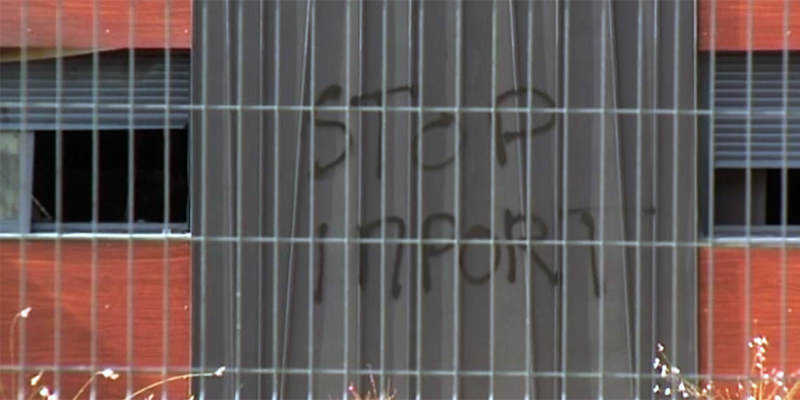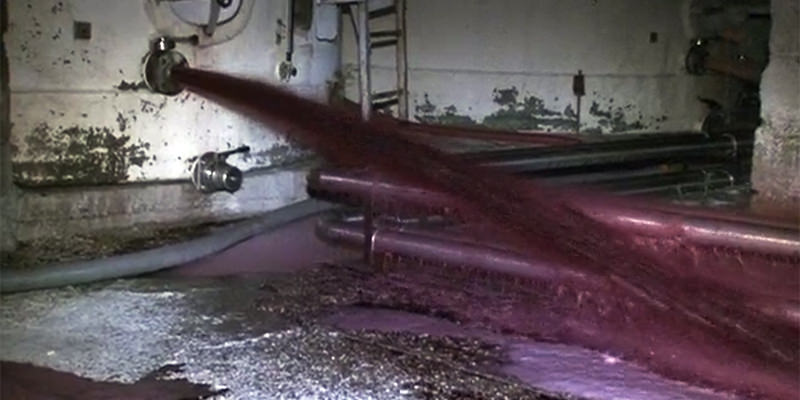You raise a glass of French wine and you think of the winemaker. You probably imagine someone with sun-soaked wrinkles, his hands as knotty as the vines he tends, sort of a knowing Mother Earth look about him. Maybe you picture him walking the vineyard, gently grazing his thick, worn knuckles against tender green leaves, cupping a cluster of violet-purple grapes, thinking of the vintage to come. Everything’s gorgeous. The sun is shining. He’s fine. You’re fine. You take a sip of his wine and he leaves his vineyard to go set an importer’s office on fire.
He is not fine. He’s a member of the Comité Régional d’Action Viticole. Also known as CRAV. A Languedoc-based French wine terrorism organization. Yes, there is absolutely such a thing.
They’re typically called “extremists,” and we say “typically” because they’ve been around for over 40 years, busting everyone’s idealized concept of the bucolic life of a French winemaker. And busting windows. And walls. Setting offices on fire and threatening the lives of industry professionals. So why aren’t you hearing more about them?
Fair to admit, there are far more threatening, depressingly more consistent kinds of terrorism to think about these days. But in the context of the wine world, CRAV is a standout: a radical fist of fury in an industry suffused with ridiculous stereotypes of gentility, almost culturally stiff with politeness. Where did CRAV come from?
In a way, they grew themselves. Or rather they grew out of their own traditions. Winemaking was perfected by the French, and gently — then aggressively — exported to other countries. Countries like Spain, which directly borders the Languedoc-Roussillon region and produces cheaper wine. And that’s the main problem, the reason for CRAV’s existence: cheap, imported, typically Spanish wine. The kind of wine the rest of us buy thoughtlessly. The kind of wine we chug after a long day without checking for notes of cassis or tannin levels. The kind of wine CRAV would dump 90,000 bottles of — because it isn’t homemade.
Yes, to the wine-thirsty it seems like a senseless waste. Except the Languedoc-Roussillon region was once known for supplying the country with that kind of wine — easy-drinking “vin de table.” The region became an essential source for it, and generations of winemakers grew up in the area, supplying that need. But since the 1970s, with ebbs and flows, France has been importing bulk table wine from Spain, Italy, and the New World, supplanting the need for anything homegrown and, incidentally, supplanting the livelihoods of its own winemakers.

To be fair to importers, Spanish table wine costs less than half of what a French table wine would cost. There’s a clear economic rationale. But CRAV members identify with a more militant side of winemaking. They cite the 1907 “winemakers’ uprising in Montepllier, when hundreds of thousands took to the streets to defend local growers and the army opened fire on the protesters, killing six.” And they’re not just fighting for a livelihood. During an April wine-dumping incident — not the first in CRAV’s history — several trucks were painted with the words “vin non-conforme,” or “non-compliant wine,” with the allegation that the imported Spanish wine was “mixing their wine with products from Latin America without advertising that to customers.”
But the group can’t trade solely on a sense of tradition or guardianship. To date, most of their attacks have occurred after hours, and most of their vitriol has been aimed at the wine itself. But in 2008, they detained Hélène Simone, a chief inspector from France’s Inspection du Travail. Simone, who was on her way to a winegrower in Albi, was apparently “assaulted [and] detained for four hours and threatened.” When the news broke out, the group responded: “the grower’s reaction was that of a desperate man.”
There’s a reason for desperation. From 2000 to 2012, France lost 12% of its vineyard acreage. Compare that with Australia, which gained 21% in the same time frame; better yet, compare it with New Zealand, which gained 168%. Considering the amount of bulk table wine on store shelves, it doesn’t look like things are changing. And neither is CRAV. On July 19, they destroyed the offices of wine-importer Sudvin, breaking desks with sledgehammers and setting offices on fire. On August 2, they dumped 50,000 liters of wine from importer Biron. Which leads to the question: how far will CRAV go? Will they do enough to be heard on international news?
In a video message sent to then-President Nicolas Sarkozy in 2007, CRAV seemed to suggest they were willing to go much, much further. “In the video – shot in a secret location late at night – seven wine-makers, their faces hidden by black balaclavas, read out the spine-chilling warning that ‘blood will flow’ if Nicolas Sarkozy does not act fast to raise the price of wine.”
The way you think of a winemaker may well change.

